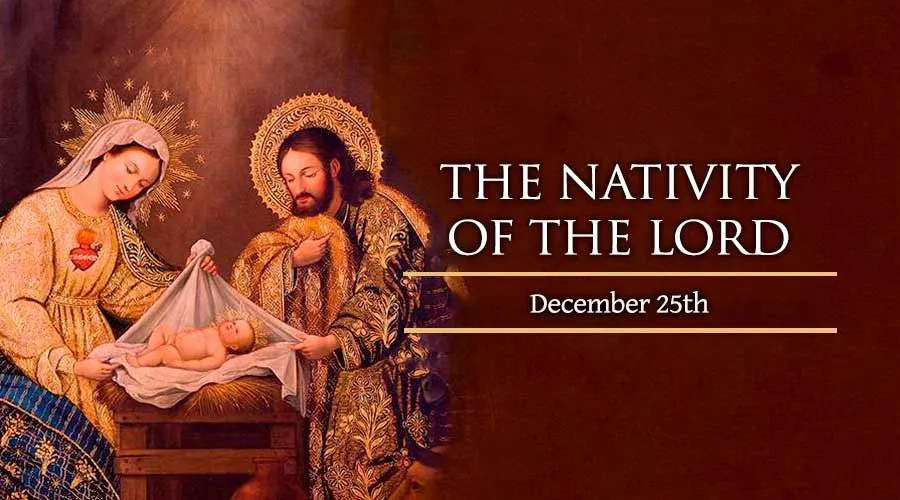Origin of Date
Concerning the date of Christ's birth the Gospels give no help; upon their data contradictory arguments are based. The census would have been impossible in winter: a whole population could not then be put in motion. Again, in winter it must have been; then only field labour was suspended, but Rome was not thus considerate. Authorities moreover differ as to whether shepherds could or would keep flocks exposed during the nights of the rainy season.
Natalis Invicti
The well-known solar feast, however, of Natalis Invicti, celebrated on December 25, has a strong claim on the responsibility for our December date. For the history of the solar cult, its position in the Roman Empire, and syncretism with Mithraism, see Cumont's epoch-making "Textes et Monuments" etc., I, ii, 4, 6, p. 355. Mommsen (Corpus Inscriptionum Latinarum, 12, p. 338) has collected the evidence for the feast, which reached its climax of popularity under Aurelian in 274. Filippo del Torre in 1700 first saw its importance. It is marked, as has been said, without addition in Philocalus' Calendar. It would be impossible here even to outline the history of solar symbolism and language as applied to God, the Messiah, and Christ in Jewish or Chrisian canonical, patristic, or devotional works. Hymns and Christmas offices abound in instances; the texts are well arranged by Cumont.
Liturgy and Custom
The fixing of this date fixed those too of Circumcision and Presentation, of Expectation and, perhaps, Annunciation B.V.M., and of Nativity and Conception of the Baptist (cf. Thurston in Amer. Eccl. Rev., December, 1898). Till the tenth century Christmas counted, in papal reckoning, as the beginning of the ecclesiastical year, as it still does in Bulls. Boniface VIII (1294-1303) restored temporarily this usage, to which Germany held longest.
The Crib (creche) or Nativity Scene
Saint Francis of Assisi in 1223 originated the crib of today by laicizing a hitherto ecclesiastical custom, henceforward extra-liturgical and popular. The presence of ox and ass is due to a misinterpretation of Isaias 1:3, and Habakkuk 3:2 ("Itala" version), though they appear in the unique fourth-century "Nativity" discovered in the Saint Sebastian catacombs in 1877. The ass on which Balaam rode in the Reims mystery won for the feast the title Festum Asinorum (Ducange, op. cit., s.v. Festum).
Hymns and Carols
<span "times="" new="" roman";="" font-size:="" 12pt;="" mso-fareast-font-family:="" mso-ansi-language:="" en-gb;="" mso-fareast-language:="" es;="" mso-bidi-language:="" ar-sa;="" mso-bidi-font-size:="" 10.0pt;="" mso-bidi-font-weight:="" bold;'="" lang="EN-GB" style="margin: 0px; padding: 0px; box-sizing: border-box; color: rgb(47, 34, 42); font-family: Inter, sans-serif; font-size: 18px; font-style: normal; font-variant-ligatures: normal; font-variant-caps: normal; font-weight: 400; letter-spacing: normal; orphans: 2; text-align: start; text-indent: 0px; text-transform: none; white-space: normal; widows: 2; word-spacing: 0px; -webkit-text-stroke-width: 0px; background-color: rgb(255, 255, 255); text-decoration-thickness: initial; text-decoration-style: initial; text-decoration-color: initial;">The degeneration of these plays in part occasioned the diffusion of noels, pastorali, and carols, to which was accorded, at times, a quasi-liturgical position. Prudentius, in the fourth century, is the first (and in that century alone) to hymn the Nativity, for the "Vox clara" (hymn for Lauds in Advent) and "Christe Redemptor" (Vespers and Matins of Christmas) cannot be assigned to Ambrose. "A solis ortu" is certainly, however, by Sedulius (fifth century). The earliest German Weihnachtslieder date from the eleventh and twelfth centuries, the earliest noels from the eleventh, the earliest carols from the thirteenth. The famous "Stabat Mater Speciosa" is attributed to Jacopone da Todi (1230-1306); "Adeste Fideles" is, at the earliest, of the seventeenth century. These essentially popular airs, and even words, must, however, have existed long before they were put down in writing.







